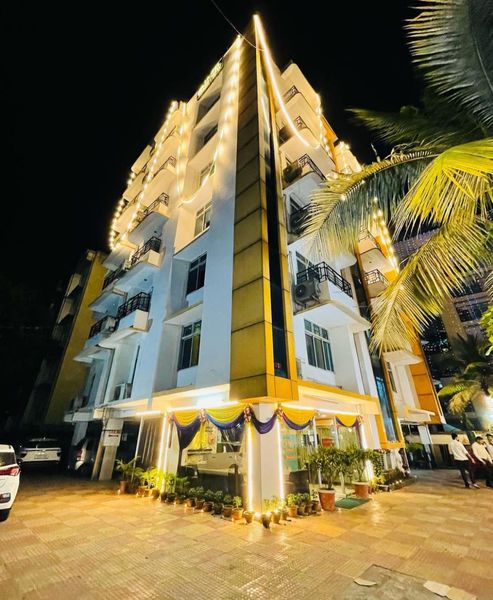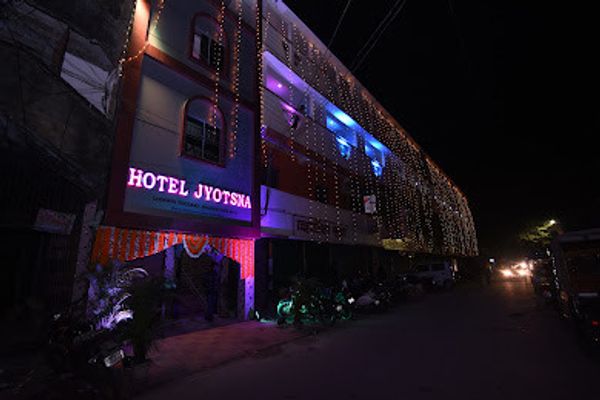How to Inspect a Used RV Before Buying
 Ates Acar
05 May, 2025
13 mins read
31
Ates Acar
05 May, 2025
13 mins read
31

When it comes to purchasing a used RV, whether it’s your first time or you're a seasoned RV enthusiast, ensuring that you’re making an informed decision is key. The market is flooded with options, and places like Vogt RV have a great selection of used travel trailers for sale, but it’s essential to know how to properly inspect a used RV to avoid costly repairs down the road. In this guide, we’ll walk you through the key steps of inspecting a used RV, so you can buy with confidence.
1. Start with the Exterior
The first thing you’ll want to do when inspecting a used RV is take a thorough look at the exterior. This is your first line of defense in spotting potential issues that could affect the safety or longevity of the RV.
Check for Body Damage: Look for any dents, scratches, or signs of repair on the RV's body. This could indicate previous accidents or issues. Pay close attention to the roof as well, especially around the edges and seams, where water can infiltrate and cause significant damage.
Inspect the Tires: Tires can be costly to replace, so it’s important to check their condition. Look for signs of uneven wear or dry rot, which can occur if the RV has been stored for long periods without being used. Make sure the tires are all the same size and type for optimal safety.
Windows and Seals: Inspect the windows and seals for any cracks or wear. Check for leaks or signs of water damage inside, which could indicate a faulty seal. Be mindful of the RV’s age; older seals may need to be replaced to prevent water leaks.
2. Check the Roof
The roof of an RV is one of the most critical areas to inspect. Roof leaks are often difficult to detect but can cause significant damage over time. Climbing up to the roof may be required, but it’s worth it to catch any issues early.
Look for Cracks or Soft Spots: Check for any signs of cracks, holes, or soft spots on the roof. The sealant around vents, skylights, and air conditioning units should also be inspected. If the sealant is cracked or brittle, this could lead to water leaks inside the RV.
Inspect Roof Vents: Open up any roof vents and check for any signs of mold, water stains, or rust around the vent. Make sure the vent opens and closes properly.
3. Inspect the Interior
The interior inspection is where you’ll catch many of the more obvious signs of wear and tear, but it’s also where the comfort and livability of the RV come into play. Spend some time getting a feel for the space and functionality of the layout.
Check for Water Damage: The most common interior issue in used RVs is water damage. Look for water stains, mold, or a musty smell, especially near the roof, walls, and floor. Water damage can affect the structural integrity of the RV, so it’s essential to catch it early.
Test All Appliances and Systems: Turn on all the appliances, including the stove, refrigerator, microwave, and air conditioning. Run the water to ensure the plumbing works properly and there are no leaks. Check the electrical system and ensure the lights, outlets, and battery are functioning correctly.
Inspect the Flooring: The floor is another area to check closely. Look for any soft spots or signs of rot, especially in areas like the bathroom and kitchen. A spongy floor could indicate water damage or even structural issues, which can be costly to fix.
Test the Slide-Outs: If the RV has slide-outs, make sure they open and close smoothly. Check the seals around the slide-out to ensure they’re intact and not letting water in.
4. Check the Underbelly and Chassis
The underbelly of the RV is where you’ll find the plumbing, electrical, and waste systems, so it’s essential to ensure everything is in good condition.
Inspect the Frame and Suspension: Check the RV’s chassis for rust, cracks, or any signs of damage. The suspension should also be in good condition to ensure a smooth ride.
Plumbing and Waste System: Inspect the water tanks, pipes, and connections for leaks or signs of damage. Check the waste tank for any cracks or leaks, as this can be a major issue. Make sure the sewer hose connection is intact and functional.
5. Test Drive the RV
Once you’ve inspected the exterior and interior, it’s time for the most crucial step: taking the RV for a test drive. This is your opportunity to assess the engine, transmission, and overall handling of the vehicle.
Listen for Unusual Sounds: Pay attention to any strange noises, such as rattling or grinding, which could indicate mechanical issues. Listen for smooth engine operation and pay attention to the brakes and suspension.
Check the Driving Experience: Take the RV on a variety of roads, including highways, to get a feel for how it handles. Make sure the steering feels stable and the RV drives straight without any pulling to one side. Check the turning radius to ensure it’s easy to maneuver.
Test the Brakes: Check the brakes by driving at a low speed and applying them gently. Ensure the braking system is responsive and doesn’t make any strange noises.
6. Check the Engine and Mechanical Systems
Finally, you’ll want to check the engine and mechanical systems of the RV to ensure they’re in good condition.
Engine Inspection: Look for any signs of leaks or oil stains around the engine. Check the belts and hoses for wear or cracks, and ensure there are no loose parts.
Ask for Maintenance Records: A well-maintained RV will have service records that show regular maintenance and repairs. If the seller cannot provide maintenance records, that could be a red flag.
Examine the Generator: If the RV has a generator, test it to ensure it’s working correctly. Generators are often an additional expense, so you want to ensure it's in good working order before making a purchase.
7. Ask for a Professional Inspection
Even if you feel confident in your ability to inspect the RV, it’s always a good idea to have a professional RV inspector take a look before finalizing the purchase. A certified RV inspector will be able to spot potential issues that you might miss, giving you peace of mind before you make such a significant investment.
Conclusion
Buying a used RV can be an exciting adventure, but it requires careful inspection to ensure you're getting a reliable and safe vehicle. Whether you’re looking for used travel trailers for sale at Vogt RV or another dealer, knowing what to look for during the inspection process is key. From the exterior and roof to the interior and undercarriage, taking the time to thoroughly inspect each component can save you from costly repairs and ensure your RV adventure is a smooth one.
Written By:
Ates Acar
0 claps
0 Comment



Hotels at your convenience
Now choose your stay according to your preference. From finding a place for your dream destination or a mere weekend getaway to business accommodations or brief stay, we have got you covered. Explore hotels as per your mood.


